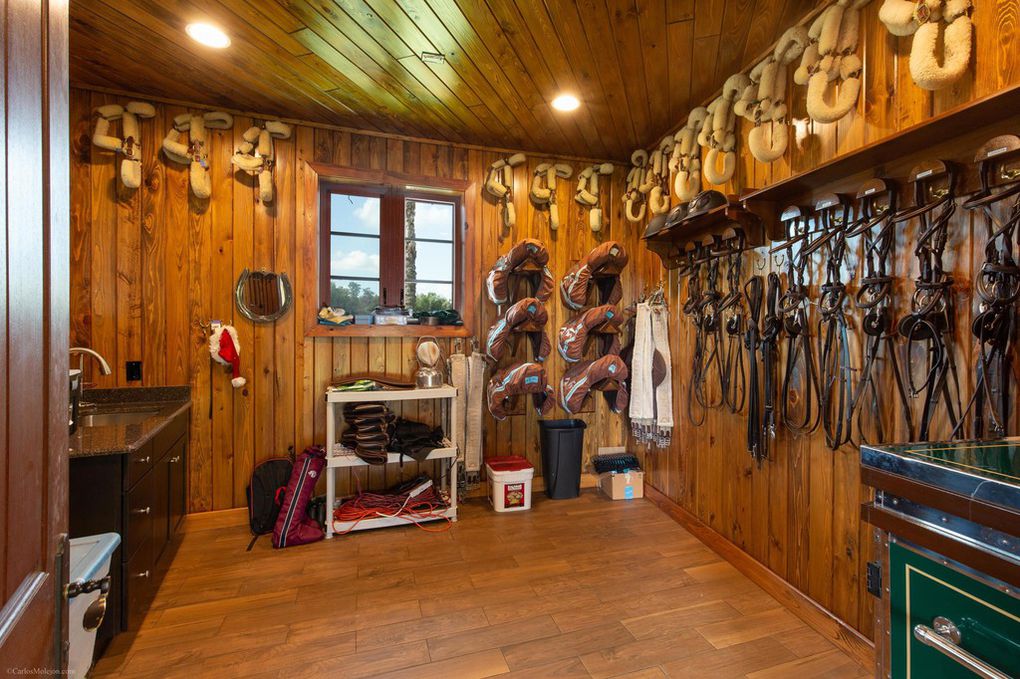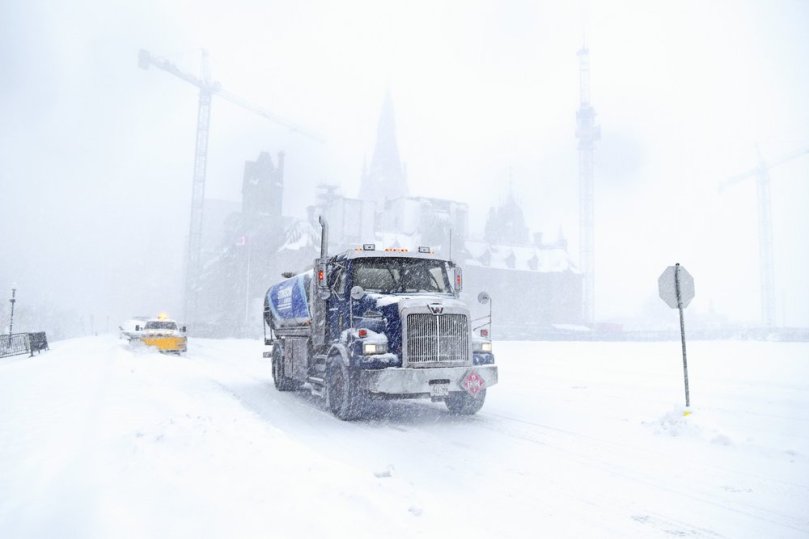It’s no secret that when moving from one home to another, the move distance between the two homes will determine, to a large extent, how the entire move will be carried out.
 In reality, there’s a substantial difference between preparing for a cross-country move where the final destination (the new home) may be hundreds or thousands of miles away AND getting ready for an in-town move where the new apartment or house can be just down the street or, in the worst case scenario, to another part within the same town or city.
In reality, there’s a substantial difference between preparing for a cross-country move where the final destination (the new home) may be hundreds or thousands of miles away AND getting ready for an in-town move where the new apartment or house can be just down the street or, in the worst case scenario, to another part within the same town or city.
Even though you’re moving only a short distance away, you should still expect to face and overcome a number of relocation challenges – difficulties that we are going to address here.
So, to be prepared for your upcoming in-town move in the best possible way, check out these top 10 tips for moving across town.
1. Prepare for your in-town move (Moving Checklist)
The much shorter move distance will be a huge bonus for you when moving across town. First of all, you will save a lot of money from the transportation costs compared to a cross-country move. And second of all, you should be able to finish the house move within several hours and certainly within the same day as opposed to days or even weeks when moving long distance.
Nevertheless, the success of your same-town move will still depend on how well you organize your time and how many essential moving tasks you’ll be able to tackle prior to Moving day itself.
And, of course, the best way to use your pre-move time efficiently is to follow a detailed moving checklist.
The good news is that it’s relatively easy to create a moving checklist and to use it as a guide throughout your preparation. You simply write down, either on a piece of paper or on your preferred electronic device, all the important tasks that you will need to take care of before the day of the move.
Make sure you prioritize those move-related jobs so that you can guarantee the completion of the most critical ones. To get good ideas about what a high-quality moving timeline should look like, take a peek at our moving checklist – interactive, printable and 100% free of charge.
2. Organize a DIY in-town move (Option 1)
Because of the fact that you’re only moving a short distance within a town or city, you should be well familiar with, it’ll make all the sense in the world to try to organize a self-move.

Moving across town can be a good opportunity to try to organize a DIY move.
In fact, moving across town by yourself is a great opportunity to show your organizational skills and to prove to yourself that you are perfectly capable of overcoming a few move-related obstacles along the way with the purpose of saving money in the process.
- Secure a moving vehicle. You’ll need to arrange for a moving vehicle in advance: either rent a truck from a local truck rental agency or borrow a pick-up truck or a freight van from a friend. If you don’t intend to move any large furniture pieces, you can try to transport some of the boxes and smaller household items with your own car.
- Ask friends for help. Moving by yourself, be it even a short distance, is not something you should try to do entirely on your own. You’ll still need to lift, carry and load large boxes, big furniture pieces, or possibly some household appliances as well. Stay safe by securing the help of a few good friends during the day of the in-town move.
10 tips for moving on a low budget
3. Hire cross-town movers (Option 2)
Needless to say, the easiest way to move across town is to leave everything to experienced local movers. Despite the fact that you’re moving within the same town or city, there are a number of factors that may get you to rethink your decision to pull off a DIY move.
- Heavy furniture. If you’ve made up your mind to take with you some of your large and heavy furniture pieces, then it’s a good idea to hire professional movers for that task. Some of the bulkier furniture items will probably need to be disassembled properly and then packed correctly to survive the local move unscathed. Moreover, moving heavy furniture around poses real dangers for property damage and risks of personal injury if not done by experienced hands.
- Special items. If you’re planning on moving some special items to the new in-town home – for example, a piano, a grandfather clock or antique furniture pieces, then you shouldn’t risk possible damage to some of your unique and even priceless possessions in a desperate attempt to save a few bucks.
- No friendly assistance. Your friends may not be readily available and willing to rush to your rescue when you need them the most. Instead of getting angry with them, get experienced professionals who will finish the task much more safely and at least twice as fast.
7 simple steps to finding cheap movers
4. Create an in-town moving budget
When moving across town, you may be quick to assume that moving without professional assistance will always be the cheaper option for you. That’s not necessarily true, of course, as things are never that straightforward when it comes to moving to a new home.
To make the best possible decision under your set of unique circumstances, it’s important to create a cross-town moving budget and see which home-moving option will be better for you in terms of money, time and safety.
How much does it cost to move across town?
-

How much will your cross-town move cost?
DIY move. Make sure you factor in the cost of renting a moving truck, including the price you’ll pay for the vehicle insurance. Also, you’re going to need to rent the proper moving equipment (a furniture dolly, furniture sliders, moving straps, etc.) and purchase the required packing supplies to keep your things protected at all time.
- Local movers. Don’t forget that local movers charge by the hour so TIME will be the major factor that will determine how much your cross-town move costs. Most additional moving services such as furniture disassembly and re-assembly, packing or unpacking are also charged on an hourly basis. You may or may not need to purchase extra insurance and you should, in most cases, be ready with some cash to tip your in-town movers.
In any case, request in-town movers quotes to get a good idea about how much your cross-town move will cost when you’ve made up your mind to use professional assistance.
What are the average hourly moving rates?
5. Purge any unnecessary items
Whether you realize it or not, the short local move happens to be a great opportunity for you to declutter your home and purge any items that you have not used for a long time. Doing so will save you valuable packing time and energy, and will also enable you to save money – the fewer hours the local movers work on your move, the less they will charge you in the end.
Besides, what’s the point of moving items that you won’t need ever again? You may have never liked or needed those things in the first place. So, now it’s time to do something about it.
Inventory your home to see many items you have in total and how many of those items you can live comfortably without. Moving experts are unanimous that if you haven’t used something for over a year, then you don’t really need it. This is only a general rule, of course, but when you’re moving just across town, it can help you save a lot of money.
Consider selling or donating all the items that 1) you don’t want or need to move to the new in-town home, and 2) are still in good condition and would be a waste to just throw them away.
How to get rid of items when moving
6. Get the right packing materials
Despite the very short distance of your move across town, you’re still going to need to protect your items in case you’ve decided to complete the home packing job on your own. Remember that you can save yourself the trouble of finding the appropriate packing supplies and then working days on end to pack up your things by requesting the packing service from top-rated local movers.

Safe packing is all about having the right type and amount of packing supplies.
The major packing materials you’re going to need are cardboard boxes of different sizes, clean packing paper as the first layer of protection and bubble wrap as the preferred protective material when packing extra-fragile household items such as kitchen dishes, glassware, delicate furniture elements and so on.
You’ll be glad to learn that one of the cheapest ways to move across town is to spend less money on packing. Do this by getting hold of free moving boxes – either from friends, colleagues, and neighbors, or from local businesses (grocery stores, bookstores, electronics stores, etc.) that have excessive amounts of cardboard containers and are required by law to recycle them properly.
Cut your packing expenses even further by using, whenever applicable, pieces of clothing instead of bubble wrap and plain newspaper as a filler instead of blank packing paper.
Where to get free moving boxes: Full checklist
7. Pack for a move across town
Once you optimize the number of your household items and get the right type and amount of packing supplies, you’ll be ready to initiate the packing task in case you’ve weighed in your viable options and have concluded that not hiring professional packers will make more sense for you.
Here are the best packing tips for moving across town:
- Begin packing as soon as your cross-town move becomes only a matter of time. In other words, don’t lose precious time by postponing for tomorrow what you have to do today. /What to pack first when moving/
- Consider the cost-saving idea of using the same packing boxes multiple times. How? Since you’re only moving within the same town or city, you may choose to do several small-scale trips to the new home, thus emptying the filled boxes and using them again on your next relocation trip.
- Pack your hanging clothes, still on their hangers, in clean trash bags straight from the dresser. This packing hack will save you A LOT of time and will lower the packing costs. /How to pack clothes when moving/
- How to move furniture across town? First of all, move only the furniture items that you really like and have a special meaning to you – like antique furniture, for example. Second of all, measure up the furniture pieces to make sure they will fit and match the new in-town home. And finally, disassemble partially the largest pieces to get them safely and easily to the new residence. /How to protect furniture when moving/
The best packing tips for moving
8. Transfer the utilities
There are so many things to do when moving across town that it’s easy for an important task to be forgotten in the whirlwind of activities surrounding the move. This is why, as recommended above, you just have to create and then stick to a moving checklist – the only proven method that will guarantee that no essential tasks are left behind.

Remember to transfer the home utilities to prevent unpleasant surprises at the end of the move.
One important job you may forget to take care of is to transfer your home utilities to the new residence. You surely don’t want to find the new house or apartment with no electricity and running water, as well as unheated – especially if you’re moving during the cold months of the year.
First, create a list of your home utilities – electricity, water and sewage, gas, cable TV, Internet, telephone, etc., and then go through it carefully to decide if you’re keeping all of the utility services or not. Then, contact your current utility providers in town and schedule the disconnection of the utilities in the place you’re leaving and their re-connection at the place you’re moving to.
Because you’re only moving to another part of the same town or city, you’ll only need to transfer the utilities to the new house or apartment, not change them. By keeping your current utility accounts, you won’t have to pay, at least in most cases, a cancellation fee or a connection fee.
9. Change your address
When planning a move across town, don’t forget to change your address with the USPS, preferably before the move has taken place so that you don’t lose any important pieces of mail during the prolonged move-out and move-in period. The thing is, even if you’re moving a few blocks down the same street, your postal address will change after the move is complete.
As a rule of thumb, you’re expected to change your address approximately 2 weeks before you move out. Thus said, you can still make a change of address (COA) request with the United States Postal Service (USPS) after you’ve moved to the new home.
Basically, you have 4 options to change your address when moving across town:
- Change your address online. By far the easiest way to get this task out of the way. Simply head to the official Change of Address page of the USPS to do it fast and securely.
- Change your address in person. Whenever you find some free time, visit the nearest local post office and fill out a PS Form 3575 form to initiate the procedure. To save time, download that form in advance (from here) and take it to the closest U.S. post office already filled out.
- Change your address by phone. Just dial 1-800-ASK-USPS and follow the pre-recorded instructions.
- Change your address by mail. Print out and fill in by hand the PS Form 3575, then mail the completed form with First Class postage to POSTMASTER, United States Postal Service.
10. Save BIG on your cross-town move

The best way to move across town? Hire affordable local movers.
Ultimately, your cross-town move will be about spending as little money on the local move as possible. And regardless of which relocation method you choose in the end – moving on your own or hiring cross-town movers, you’ll need to be extra careful with your moving expenses.
To really save hard-earned money when moving across town, here are the top 3 cost-saving tips you’ll do good to follow:
- Hire affordable local movers. Request in-home estimates from 3-4 local moving companies, then compare the quotes carefully to choose the one that best fits your budget and your requirements.
- Move only the things you need. Why should you pay to move things that you won’t ever need or use again? Purge your home of unwanted items and do consider selling some of them to earn some bonus cash.
- Get free moving boxes. Don’t pay for something that you can get for free. Cardboard boxes will be your biggest expense when it comes to packing supplies, so getting them free of charge will definitely turn things in your favor when you’re moving across town.
20 simple ways to reduce moving costs
The post Moving Across Town Checklist: 10 In-Town Moving Tips appeared first on The Moving Blog.









